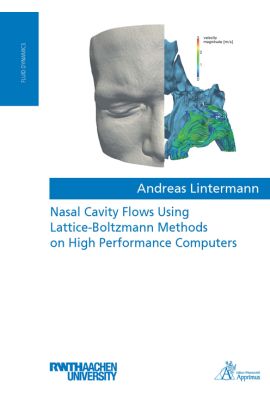Within this work the flow in the human nasal cavity is investigated using Computational Fluid Dynamics (CFD) methods. Different approaches exist to numerically simulate flows, e.g., Finite-Volume Methods (FVM), and Finite-Element Methods (FEM). However, when it comes to handling complex and intricate geometries like the nasal cavity, the Lattice-Boltzmann Method (LBM) excels due to its conductive parallelizability and its straight-forward way to treat arbitrarily shaped boundaries as they appear in biomedical applications. Therefore, such an LBM is used to simulate and analyze the flow in three pathologically distinct nasal cavities in depth to understand the physics of such flows. A new categorization procedure for nasal cavities based on the respiration and heating capability is established. This categorization method is substantiated by the analysis of the inspiratory pressure loss, wall-shear stress, heat flux, and existing vortical structures and their influence on the aforementioned parameters. Such a classification integrates into Virtual Surgery environments, supports an a priori decision process on surgical interventions, and is a potential method to evaluate surgical rhinological procedures by juxtaposing before and after surgery results.
To resolve fine-grained flow structures in such simulations and to accurately predict the wall-shear stress and heat flux, computational meshes with a large number of cells are necessary. The construction of such meshes is a challenging task due to the restricted amount of available local memory. Additionally, high grid resolutions require a generation in parallel. The increase of computational power and efficiency of today's CPUs in multi-core distributed-memory systems in High Performance Computing (HPC) offers new chances in CFD. This enables to efficiently generate computational meshes in parallel and to perform unsteady high-fidelity simulations of complex flows in intricate geometries in a reasonable amount of time. In this thesis a new parallel and robust algorithm to automatically generate hierarchical Cartesian meshes, as they are used by the LBM, is presented. The algorithm is analyzed in its parallel performance on HPC systems and scales up to hundreds of thousands of processes. It overcomes the dependence on manual input or an imbalance on the process level which other approaches suffer from. This way, the algorithm enables to generate O(1011) cells in only a few seconds.
| Autor | Lintermann, Andreas |
|---|---|
| Lieferzeit | 3-4 Tage |
| Gewicht | 0.25 kg |
| Erscheinungsdatum | 09.09.2014 |

